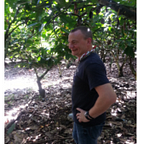War and food
Food production needs infrastructure and people. In times of war infrastructure tends to get damaged or dismantled — ploughshares sometimes become spears — and people are killed, injured or displaced in large numbers. Sorry, I just mansplained that war is bad. That point didn’t need to be repeated, but I’m still easing into this topic, so spot me that one, please.
Within the first few days of the Russian invasion of Ukraine several commentators mentioned that Ukraine is an important producer of many crops including sunflower for seed and oil, safflower for oil, and wheat, barley and corn (maize). For all of these crops Ukraine is a leading exporter to the rest of the world, with particularly strong exports to the Middle East, North Africa and Asia. If Ukraine’s production falls this year as a result of the conflict, there are likely to be some supply effects and price rises in markets where Ukraine’s production would normally be found. Rising food prices have a range of negative consequences, and hit the poorest hardest. In addition to directly increasing malnutrition and starvation, food shortages, and associated price increases, can also add to social unrest and help spark further conflicts.
In a report for the International Food Policy Research Institute (IFPRI) published at the end of February, Joseph Glauber and David Laborde, concluded that, coming on top of the existing impacts of COVID-19 and the on-going global supply chain issues, any drop in crop production by Ukraine this summer will likely have important short and long term impacts on global supplies and prices.
Impacts on Ukraine’s ability to act as a crop commodity exporter, of course, are felt by the rest of the world, but when countries are at war their internal food production issues can be severe; one only needs to look back over the miserable history of civil wars around the world in the last few decades, and their associated famines to grasp the severity of the effect of war on hunger.
A working paper for the Food and Agriculture Organization (FAO) of the United Nations published in 2003 by Slobodanka Teodisijevic documented a range of effects of conflicts on food production, food intake, and other socio-economic factors. For obvious reasons data are hard to collect from war zones, but the paper notes that agricultural production declines by 1.5% per year during conflicts and daily individual food intake can fall by an average of about 7%. These broad averages, however, mask instances when food production collapses completely.
To look at the dynamic cause and effect relationships connected with food production/supply and conflict some simple causal modelling can be quite illuminating. I built a toy causal model of some of the important linkages that are mentioned in news reports and working papers on this topic; the model is in the figure above. Let’s assume the pattern of cause and effect relationships indicated in the diagram by red and blue arrows is true for our model world. How will things play out if that’s the case? We initiate a crude form of simulation, starting from a position in which there is no conflict. The system enters a steady pattern in which conflict remains off, but agricultural production, food supply and social infrastructure all grow. Even though both hunger and high food prices are considered to make conflict more likely, our little model world remains in a peaceful state and gradually reduces all of the negative factors associated with conflict-related food supply problems.
In contrast if we activate conflict, the model flips over to an alternate state in which food supply, production and social infrastructure decline and everything else also gets worse. It’s not too difficult to see why that should be the case. There are no blue arrows pointing to conflict*. What this means for the little world of the model is that if conflict starts there’s no way to switch it off; all of its negative effects keep getting worse. If this was how our actual world worked the lesson would be clear. Don’t start wars: if the bullets don’t kill you, sooner or later the hunger will. Actually, that’s not a bad lesson for the real world.
*While this isn’t meant as anything other than a simplistic illustration to get a point across, if you want to think about the model world a bit further, one thing to do would be to ask what needs to be added to generate a mechanism to switch conflict off, if it’s turned on? Putin just turned on the conflict node in the real world, and someone badly needs to work out how to turn it off again.
